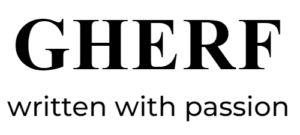Coffee is one of the most popular beverages in the world, enjoyed by millions of people every day. The coffee plant belongs to the Coffea genus, which includes over 100 species, but only two are commercially used for coffee production: C. arabica (Arabica) and C. canephora (Robusta). However, did you know its real story? It will surprise you! Take a look!
The Story of Coffee
Arabica coffee, which is native to the highlands of East Africa, is considered to be of higher quality due to its lower caffeine content and less bitterness. In contrast, Robusta coffee, despite producing a lower-quality coffee, is more resistant to adverse conditions such as high temperatures, drought, and pathogen challenge, and shows higher genetic diversity.
A recent study analyzed the story of coffee and its myths. The study was conducted by A.J. Muñoz-Pajares, Vitor Várzea, and Maria do Céu Silva and it is published in Trends in Plant Science Journal, Elsevier. You can read their article here and their findings are impressive and surprising. Some of them are as follows.
The exact origins of coffee consumption are unknown, but one legend attributes its discovery to Kaldi, a goat herder from Abyssinia. According to the story, Kaldi noticed his goats becoming frenetic after eating the red berries of certain shrubs.
Curious, he tried the fruits and suddenly felt full of energy. He shared his discovery with a local Sufi monk who tried the berries and found them invigorating. Soon, the use of a beverage prepared by boiling coffee’s red berries in water was generalized in Sufi monasteries.
Coffee seeds spread along trade and pilgrimage routes in the early 15th century to Yemen and further across the Arabian Peninsula, where the first plants were grown for local consumption. That is why, despite its African origin, the species was named arabica.
Coffee – The Satan’s Drink
By the 16th century, coffee was a popular beverage in Egypt, Persia, Syria, and Turkey. Coffee houses emerged across the Middle East, East Africa, and eventually across Europe after initial controversies. Muslim religious authorities briefly banned coffee consumption, arguing similarities between the effects of coffee and alcohol consumption, and several Christian authorities also called coffee “the Satan’s Drink”.
However, coffee consumption was eventually approved by Pope Clement VIII in Europe, who reportedly said, “being so delicious, it would be a pity to let the infidels have its exclusive use. We shall fool Satan by baptizing it, and making it a truly Christian beverage”.
Today, coffee remains one of the most popular beverages in the world, with Arabica and Robusta coffee being the two most commercially used species. While Arabica is known for its high quality, Robusta is valued for its resilience to adverse conditions. Whether you prefer a smooth and aromatic cup of Arabica or a strong and bitter cup of Robusta, there’s no denying that coffee has played an important role in human history and culture.

